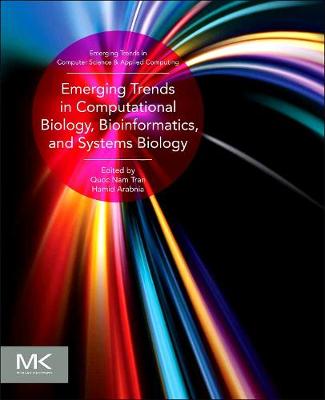Emerging Trends in Computer Science and Applied Computing
2 total works
Emerging Trends in Computational Biology, Bioinformatics, and Systems Biology
by Hamid R Arabnia and Quoc Nam Tran
Published 11 August 2015
Emerging Trends in Computational Biology, Bioinformatics, and Systems Biology discusses the latest developments in all aspects of computational biology, bioinformatics, and systems biology and the application of data-analytics and algorithms, mathematical modeling, and simu- lation techniques.
• Discusses the development and application of data-analytical and theoretical methods, mathematical modeling, and computational simulation techniques to the study of biological and behavioral systems, including applications in cancer research, computational intelligence and drug design, high-performance computing, and biology, as well as cloud and grid computing for the storage and access of big data sets.
• Presents a systematic approach for storing, retrieving, organizing, and analyzing biological data using software tools with applications to general principles of DNA/RNA structure, bioinformatics and applications, genomes, protein structure, and modeling and classification, as well as microarray analysis.
• Provides a systems biology perspective, including general guidelines and techniques for obtaining, integrating, and analyzing complex data sets from multiple experimental sources using computational tools and software. Topics covered include phenomics, genomics, epigenomics/epigenetics, metabolomics, cell cycle and checkpoint control, and systems biology and vaccination research.
• Explains how to effectively harness the power of Big Data tools when data sets are so large and complex that it is difficult to process them using conventional database management systems or traditional data processing applications.
• Discusses the development and application of data-analytical and theoretical methods, mathematical modeling, and computational simulation techniques to the study of biological and behavioral systems, including applications in cancer research, computational intelligence and drug design, high-performance computing, and biology, as well as cloud and grid computing for the storage and access of big data sets.
• Presents a systematic approach for storing, retrieving, organizing, and analyzing biological data using software tools with applications to general principles of DNA/RNA structure, bioinformatics and applications, genomes, protein structure, and modeling and classification, as well as microarray analysis.
• Provides a systems biology perspective, including general guidelines and techniques for obtaining, integrating, and analyzing complex data sets from multiple experimental sources using computational tools and software. Topics covered include phenomics, genomics, epigenomics/epigenetics, metabolomics, cell cycle and checkpoint control, and systems biology and vaccination research.
• Explains how to effectively harness the power of Big Data tools when data sets are so large and complex that it is difficult to process them using conventional database management systems or traditional data processing applications.
Emerging Trends in Applications and Infrastructures for Computational Biology, Bioinformatics, and Systems Biology: Systems and Applications covers the latest trends in the field with special emphasis on their applications. The first part covers the major areas of computational biology, development and application of data-analytical and theoretical methods, mathematical modeling, and computational simulation techniques for the study of biological and behavioral systems.
The second part covers bioinformatics, an interdisciplinary field concerned with methods for storing, retrieving, organizing, and analyzing biological data. The book also explores the software tools used to generate useful biological knowledge.
The third part, on systems biology, explores how to obtain, integrate, and analyze complex datasets from multiple experimental sources using interdisciplinary tools and techniques, with the final section focusing on big data and the collection of datasets so large and complex that it becomes difficult to process using conventional database management systems or traditional data processing applications.
The second part covers bioinformatics, an interdisciplinary field concerned with methods for storing, retrieving, organizing, and analyzing biological data. The book also explores the software tools used to generate useful biological knowledge.
The third part, on systems biology, explores how to obtain, integrate, and analyze complex datasets from multiple experimental sources using interdisciplinary tools and techniques, with the final section focusing on big data and the collection of datasets so large and complex that it becomes difficult to process using conventional database management systems or traditional data processing applications.

